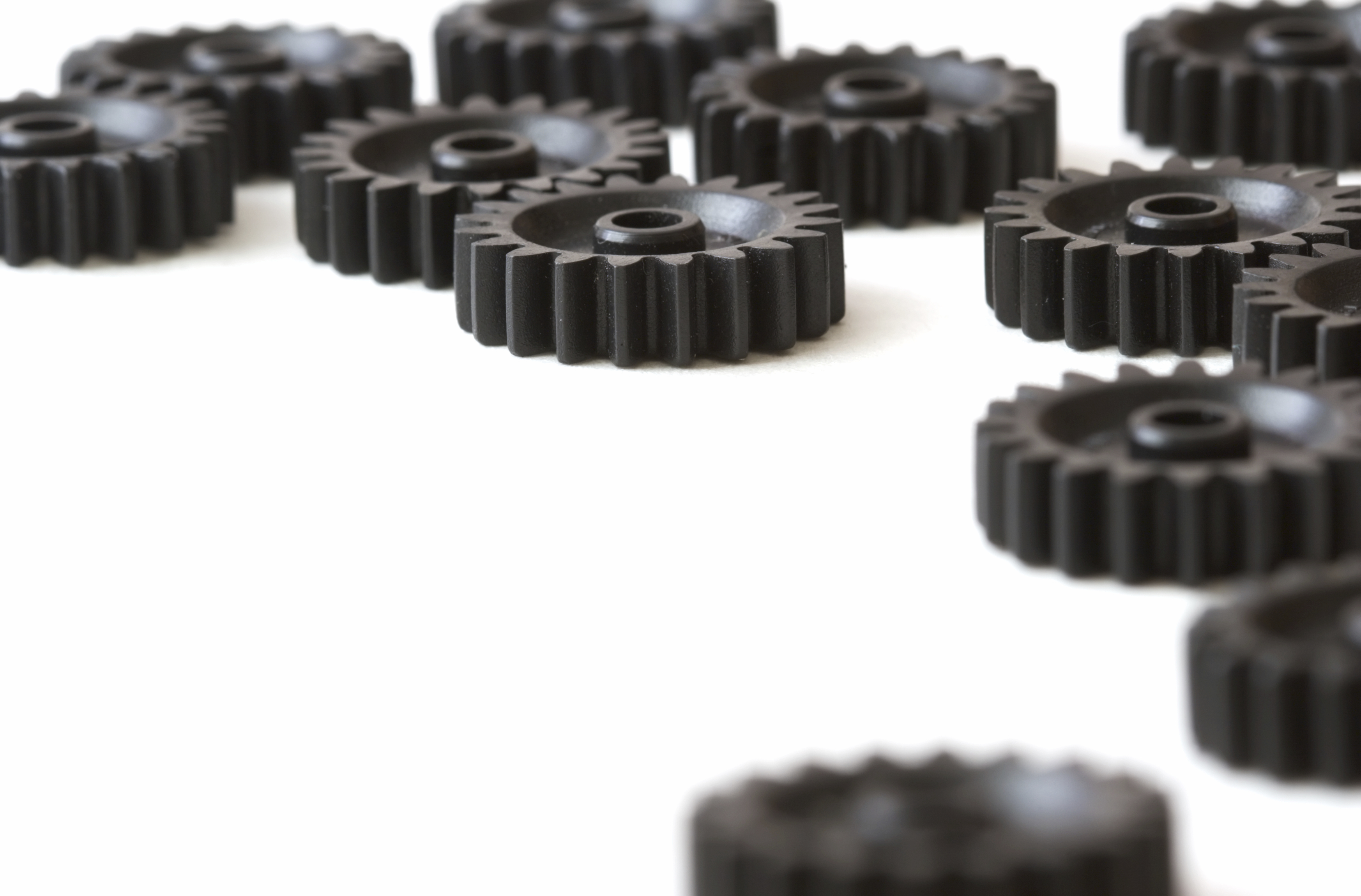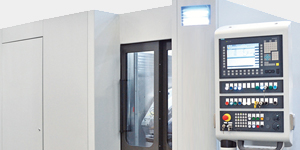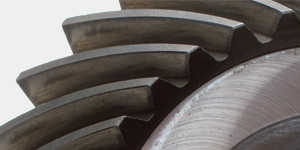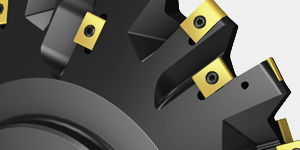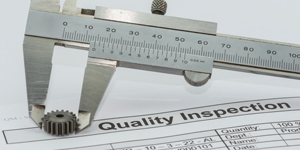When speaking about gears, the most common application is to translate speed and torque via rotation. Some gear systems accomplish this using parallel axes, some use intersecting axes, and some operate on non-intersecting, non-parallel axes. Another application is to translate the rotational motion to linear motion. Commonly this is done via a rack and pinion system.
Rack and pinion systems are remarkably simple designs. A rack of any length can be fixed and a pinion mounted on a shaft can translate across the rack into a reciprocating motion. The design considerations for this setup include matching the pitch, the pressure angle, and the face width of both components. If the gear face width exceeds the rack face width, the rack will prematurely wear the gear’s teeth. Conversely, if the rack face width exceeds the face width of the gear, then the gear will prematurely wear the rack’s teeth.
The choice of material and lubrication is critical for the performance and longevity of rack and pinion gearing in linear applications. Material selection for this type of system is dependent on the torque requirements, operating environment, and desired service life. As the pinion typically sees more torque than the rack, it is common to use a material for the pinion that is stronger than the material used for the rack. This can be accomplished by using an alloy steel pinion with a carbon steel rack or by hardening the teeth of the pinion. Proper lubrication is essential to minimize friction, reduce wear, and prevent premature failure. Lubricants should be selected based on the operating temperature, load, and speed of the pinion.
Straight tooth gearing is available in most common pitch sizes. This allows the end user to readily select a suitable pinion. When choosing a pinion, realize that the speed of the shaft is inversely proportional to the number of teeth on the pinion. A pinion with a large number of teeth can translate into a longer distance per revolution when compared to a pinion with fewer teeth. Thus, linear speed along the rack will be determined by both the shaft speed and the number of teeth on the pinion.
One disadvantage of using straight tooth rack and pinions with standard pitch sizes is that the linear translation is fractional. For example, a module three pinion with thirty teeth has a pitch diameter of ninety millimeters. However, the pitch circumference is equal to the pitch diameter times π. This results in a linear translation of 282.743 millimeters per revolution (Figure 1).

This disadvantage can be overcome using either of two solutions. One solution is to use circular pitch instead of module. Circular pitch is the fundamental distance between corresponding points on adjacent gear teeth measured along the pitch circle. Circular pitch (Pc) is inextricably linked to the gear’s geometry and is defined as:
Pc = πD / N
Where:
- Pc is the circular pitch.
- D is the pitch circle diameter.
- N is the number of teeth.
In metric gear systems, pitch is known as module (m). Module is defined as the pitch diameter divided by the number of teeth:
m = D / N
By combining these equations, we can express circular pitch in terms of module:
Pc = πm
If we use the same example as above but substitute CP10 (10-millimeter circular pitch) in place of module three, each revolution of the thirty-tooth pinion results in an exact translation along the gear rack of three hundred millimeters (Figure 2). This can be useful in precision applications where the exact translation is needed.

An alternative to circular pitch is to use helical racks and pinions. When choosing a helical rack and pinion system, it is important to remember that the pitch diameter of a helical pinion increases in size relative to the value of the helix angle according to the formula:
D = N * Mn / cos β
Where:
- D is the pitch circle diameter.
- N is the number of teeth.
- Mn is the normal module.
- β is the helix angle.
When a helix angle of 19° 31’ 41” is chosen, the linear pitch along the gear rack becomes identical to that of a circular pitch straight tooth rack. As such, a module 3, 30-tooth pinion with a helix angle of 19° 31’ 41” will translate three hundred millimeters per revolution.
The addition of a helix angle to the system creates both advantages and disadvantages over a straight tooth rack and pinion system. By using helical gearing, you are increasing the total number of teeth in mesh. This additional tooth contact permits the transmission of higher loads in the same design envelope. The helical slope of the teeth also provides a smoother and quieter operation as the gears slide in and out of engagement. The major disadvantage of using helical racks and pinions is that the helix angle induces axial forces which must be counteracted by axial thrust bearings. Depending on the orientation of the helix angle and the direction of travel of the pinon, the axial thrust loads will vary in direction along the drive shaft.
An additional consideration to account for in helical rack and pinon systems is that the rack and the pinion both must have the same helix angle, but the direction of the helix must be opposite.

For all rack and pinion systems, some of the key design considerations are:
- Racks can be produced with finished ends. This permits several racks to be assembled end-to-end such that they form a continuous infinite length.
- If a rack is hardened, it is important to also harden the pinion.
- If the rack is ground-finished, the pinion must be ground-finished also. If both components are not ground, then the precision grade of the system will be significantly reduced.
- Lubrication of rack and pinion systems is critical to achieving the designed life of the system.
Both helical and circular pitch rack and pinion systems are used to transfer rotary motion into linear motion in many applications. Some of these include:
- Robotics: For precise linear actuation in robotic arms, gantries, and automated assembly systems.
- Machine Tools: In CNC machines, linear stages, and other precision machining equipment.
- Aerospace: For control surface actuation, landing gear mechanisms, and other critical applications.
- Medical Devices: In surgical robots, medical imaging equipment, and patient positioning systems.
- Industrial Automation: In material handling systems, packaging machinery, and other automated processes.
Whether choosing circular pitch gearing, or helical gearing, there are many sophisticated solutions for linear motion challenges. Beyond the common straight tooth rack and pinion systems, innovative designs enable enhanced performance and customization specific to your application. Through careful consideration of gear geometry, material properties, and lubrication, engineers can leverage circular pitch principles to create highly precise and efficient linear actuation systems.
